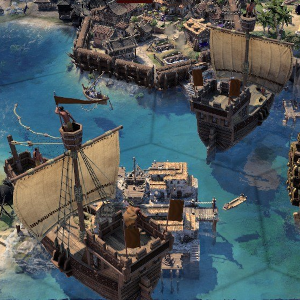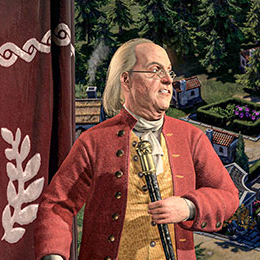Three months have passed since Firaxis Games unleashed Sid Meier’s Civilization VII upon the world, and what a fascinating journey it has been. Having spent countless hours building empires, commanding armies, and witnessing civilizations rise and fall through the game’s revolutionary Ages system, I can confidently say that Civilization VII represents both the most ambitious entry in the franchise and perhaps its most polarizing.
The Ages Revolution: A Game-Changer That Actually Changes Games
The most significant departure from Civilization VI lies not in incremental improvements, but in a fundamental reimagining of how a 4X strategy game unfolds. The Ages system divides a single game of Civilization into distinct playable chapters, with every Age designed to capture the essence of a specific historical period. This isn’t merely cosmetic, it’s a structural revolution that addresses one of the genre’s most persistent problems: the dreaded late-game slog.
Where Civilization VI often devolved into endless micromanagement by the Industrial Era, with dozens of cities requiring constant attention and hundreds of units cluttering the map, Civilization VII’s Ages system creates natural breaking points. Each age feels like its own complete game experience, with unique mechanics, technologies, and strategic priorities. The Antiquity Age emphasizes exploration and early settlement, the Exploration Age focuses on expansion and cultural development, and the Modern Age delivers the technological and military climaxes players expect.
What makes this system particularly ingenious is how it handles the transition between ages. Rather than simply unlocking new tech trees, the game fundamentally shifts its mechanical focus. Cities that were perfectly positioned for ancient trade routes might find themselves obsolete in the age of ocean exploration, forcing players to adapt their strategies rather than simply scaling up existing ones.
Commander Units: Strategy Simplified or Oversimplified?
 The introduction of Commander units represents the most prominent change to combat, allowing these powerful military leaders to pack nearby units into a single “stack” that benefits from movement bonuses. This addresses one of Civilization VI’s most criticized aspects: the tedious movement of individual units across increasingly large maps.
The introduction of Commander units represents the most prominent change to combat, allowing these powerful military leaders to pack nearby units into a single “stack” that benefits from movement bonuses. This addresses one of Civilization VI’s most criticized aspects: the tedious movement of individual units across increasingly large maps.
In practice, Commanders transform warfare from a logistics nightmare into a strategic chess match. Instead of spending twenty minutes per turn moving fifty individual units, players can now relocate entire armies with a few clicks. This streamlined approach prevents some of the late-game busyness that tends to pop up in 4X games while maintaining strategic depth.
However, this simplification comes with trade-offs. The tactical complexity of positioning individual units, a hallmark of Civilization VI’s combat system, has been somewhat diminished. Veterans of the previous game might find themselves missing the granular control over battlefield positioning, even as they appreciate the reduced micromanagement burden.
The Commander system also introduces a new layer of strategic resource management. These units level up through combat, gaining powerful abilities that can turn the tide of entire campaigns. A veteran Commander with the right upgrades can make an otherwise average army devastatingly effective, creating interesting risk-reward decisions about when and where to commit these valuable assets.
Districts Reimagined: Less Puzzle, More Possibility
Civilization VI’s district system, while innovative, often reduced city planning to a mathematical optimization puzzle. Players spent more time calculating adjacency bonuses than thinking about the thematic development of their civilizations. Civilization VII takes a different approach, removing the need to place districts in one specific spot for min/max purposes.
This change might seem minor, but its impact on gameplay flow is substantial. Cities feel more organic in their development, with districts serving their intended purpose rather than existing solely to maximize numerical bonuses. The result is a more intuitive city-building experience that encourages creative development patterns rather than rigid optimization.
The new system also reduces the analysis paralysis that could plague Civilization VI. Instead of spending ten minutes calculating the optimal district placement for each city, players can focus on higher-level strategic decisions: which civilizations to ally with, where to expand next, and how to adapt to the changing dynamics of each Age.
The Builder Exodus and Its Consequences
 One of the most controversial changes involves the removal of Builder units, a staple of Civilization VI’s improvement system. This elimination represents a significant shift in how players interact with terrain development. Instead of manually constructing improvements with limited-use units, Civilization VII automates much of this process through other mechanisms.
One of the most controversial changes involves the removal of Builder units, a staple of Civilization VI’s improvement system. This elimination represents a significant shift in how players interact with terrain development. Instead of manually constructing improvements with limited-use units, Civilization VII automates much of this process through other mechanisms.
This change streamlines the early game considerably, eliminating the constant need to produce and position Builder units across your territory. However, it also removes a layer of tactical decision-making that many players found engaging. The choice of which tiles to improve first, how to protect vulnerable Builders during wartime, and the resource management of Builder charges added a compelling micro-strategic element that is now absent.
The automation works well for maintaining game flow, but it does make the world feel slightly less hands-on. There’s something satisfying about personally directing the construction of that crucial mine or farm that helped your civilization flourish, a satisfaction that’s harder to achieve when improvements appear through automated processes.
Performance and Polish: A Solid Foundation
Three months post-launch, Civilization VII demonstrates the kind of technical stability that has become increasingly rare in major game releases. The game runs smoothly on a wide range of hardware configurations, with loading times significantly improved over Civilization VI’s notorious wait periods. The AI, while not perfect, provides a more engaging challenge than its predecessor, with computer players demonstrating better understanding of the Ages system and more coherent long-term planning.
The visual presentation deserves particular praise. The art style strikes an excellent balance between realistic detail and stylized clarity, making it easy to parse complex information at a glance while maintaining the epic scope that defines the Civilization experience. The transition animations between Ages are particularly well-executed, providing genuine emotional weight to these pivotal moments in your civilization’s development.
Multiplayer Evolution: Synchronized Ambition
 Multiplayer Civilization has always been a commitment, games can stretch across weeks or months. Civilization VII’s Ages system provides natural stopping points that make multiplayer sessions more manageable. Each Age concludes with a sense of completion, allowing players to take breaks without feeling like they’re abandoning an unfinished experience.
Multiplayer Civilization has always been a commitment, games can stretch across weeks or months. Civilization VII’s Ages system provides natural stopping points that make multiplayer sessions more manageable. Each Age concludes with a sense of completion, allowing players to take breaks without feeling like they’re abandoning an unfinished experience.
The Commander system also improves multiplayer flow by reducing the time each player spends on unit movement during their turns. This might seem like a minor improvement, but anyone who has waited through forty-five-minute turns in late-game Civilization VI will appreciate the streamlined experience.
Comparing the Titans: VII vs VI
Where Civilization VI excelled in tactical complexity and granular control, Civilization VII prioritizes strategic flow and narrative coherence. VI rewarded players who enjoyed optimizing every detail of their civilization’s development, while VII appeals to those who prefer focusing on big-picture decisions and historical roleplay.
Civilization VI’s district system was mathematically satisfying but often felt divorced from thematic concerns. VII’s approach is less mechanically dense but more thematically coherent. Cities develop in ways that feel historically appropriate rather than numerically optimal.
The technological progression in VI was linear and predictable, you knew exactly what you’d be researching three eras in advance. VII’s Age system creates genuine uncertainty and meaningful choices about your civilization’s developmental path.
Combat in VI demanded careful positioning and tactical thinking but often bogged down in micromanagement. VII’s Commander system sacrifices some tactical depth for strategic clarity and improved pacing.
The Verdict: Bold Evolution or Risky Departure?
The Ages system is a major game-changer that really enhances the genre in a big way, making Civilization VII a ton of fun despite some minor gripes. After three months of play, it’s clear that Civilization VII succeeds in its primary goal: creating a more focused, narratively coherent 4X experience.
However, this success comes with sacrifices. Players who loved the intricate optimization puzzles of Civilization VI might find VII’s streamlined approach less engaging. The reduced micromanagement is a blessing for some and a curse for others.
What’s most impressive about Civilization VII is how it addresses the genre’s fundamental pacing problems without simply adding more content. Instead of solving late-game tedium by making turns faster, it restructures the entire game experience to maintain engagement throughout. This is genuine innovation in a genre that too often relies on incremental improvements.
The game isn’t perfect, some systems feel slightly underdeveloped, and longtime fans will need time to adjust to the new paradigms. But the gameplay experience is refreshing, feeling like a Civilization game while being distinct enough to deserve to be its own game.
Looking Forward: The Future of Civilization
Three months in, Civilization VII feels like the foundation for the next decade of 4X gaming rather than the culmination of the previous decade. The Ages system alone provides enough mechanical depth to support years of expansions and modifications. The streamlined approach creates space for additional complexity without returning to the overwhelming micromanagement that plagued late-game VI.
For players considering the transition from Civilization VI, the question isn’t whether VII is objectively better, it’s whether its particular approach to strategy gaming aligns with your preferences. If you enjoyed VI’s tactical puzzles and optimization challenges, you might find VII’s streamlined approach lacking. If you were frustrated by VI’s late-game tedium and sought a more narratively coherent experience, VII delivers exactly what you’ve been waiting for.
Civilization VII doesn’t just iterate on its predecessor, it reimagines what a 4X strategy game can be. Whether that reimagining succeeds depends largely on what you want from your conquests of the world. But after three months of building empires across the ages, I can say with confidence that this is a direction worth exploring.
The crown may have changed heads, but the throne remains as compelling as ever.


